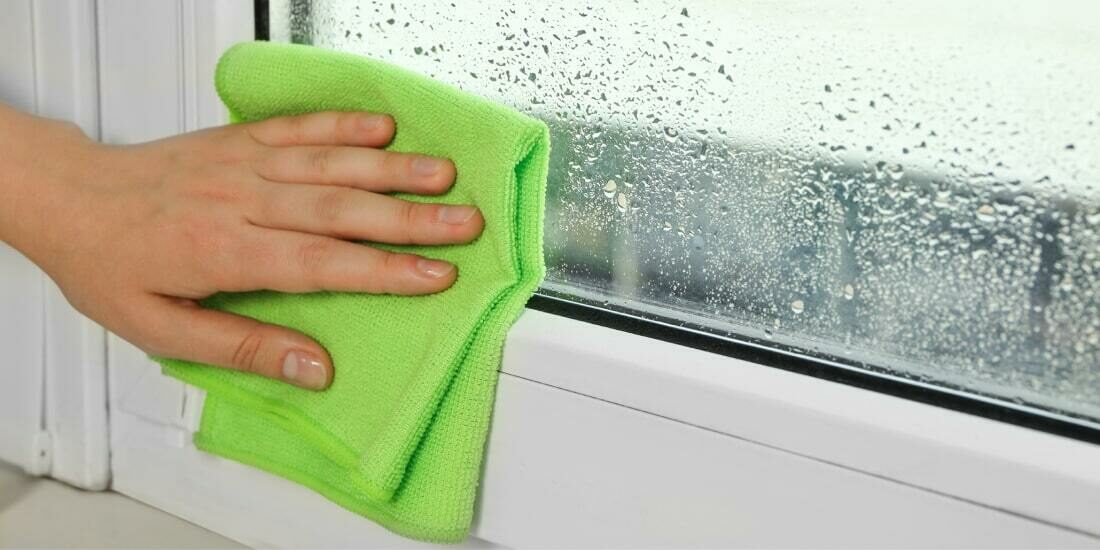How to Effectively Remove Condensation From Windows Over Winter

Now that the changeable weather is dropping in temperature, we may have started to turn our heating on, but this leads to condensation appearing on internal window panes, which isn’t so nice to wake up to. Condensation, if not cleared properly, can get worse and lead to various problems, including rot as well as cause breathing problems and bad air quality.
Heavily diluted bleach is an effective way to remove mould. Diluting it with water is still efficient against mould without damaging the window frame or cill. You can also use a mould removing cleaner or solution. If you’re using strong chemicals, it’s best to wear gloves when cleaning as some of these products are irritants or corrosive.
After you’ve gone over the area with a soft cloth, repeat the process until the mould is gone. The best way to prevent condensation, and therefore mould, is to increase ventilation to the area. Make sure the area is dry after you’ve cleaned it and open the windows to provide fresh air.
You can use the same cleaning method with condensation in order to be thorough, as this will prevent mould growth. It’s always best to wipe away any condensation as soon as you see it. This is the best preventative measure.
If you regularly ventilate your home by opening the windows, you’re less likely to suffer from condensation. If you’re drying washing indoors, don’t forget to make sure the room is ventilated. As clothes dry, they release the moisture in them and it goes into the air, which can cause damp and condensation. A free flow of air will banish this moisture-laden air.
Moisture on windows can build up on a daily basis, but it should also be cleaned on a daily basis. Unfortunately, this does mean wiping the windows dry before you leave for work in the morning, but you can save your curtains from any build-up of mould in the process. Not only this, but you’ll improve the indoor air quality so you don’t end up with breathing problems associated with it.
Sudden rises and drops in temperature are indicative of condensation. Keeping a constant temperature, instead of repeatedly warming and cooling, will limit condensation as surfaces won’t get a chance to cool down as much.
Good insulation helps prevent condensation. It can prevent condensation on cold spots on walls and ceilings. Well insulated, double glazed windows can also help prevent as much condensation appearing, which is less of a nightmare to deal with.
